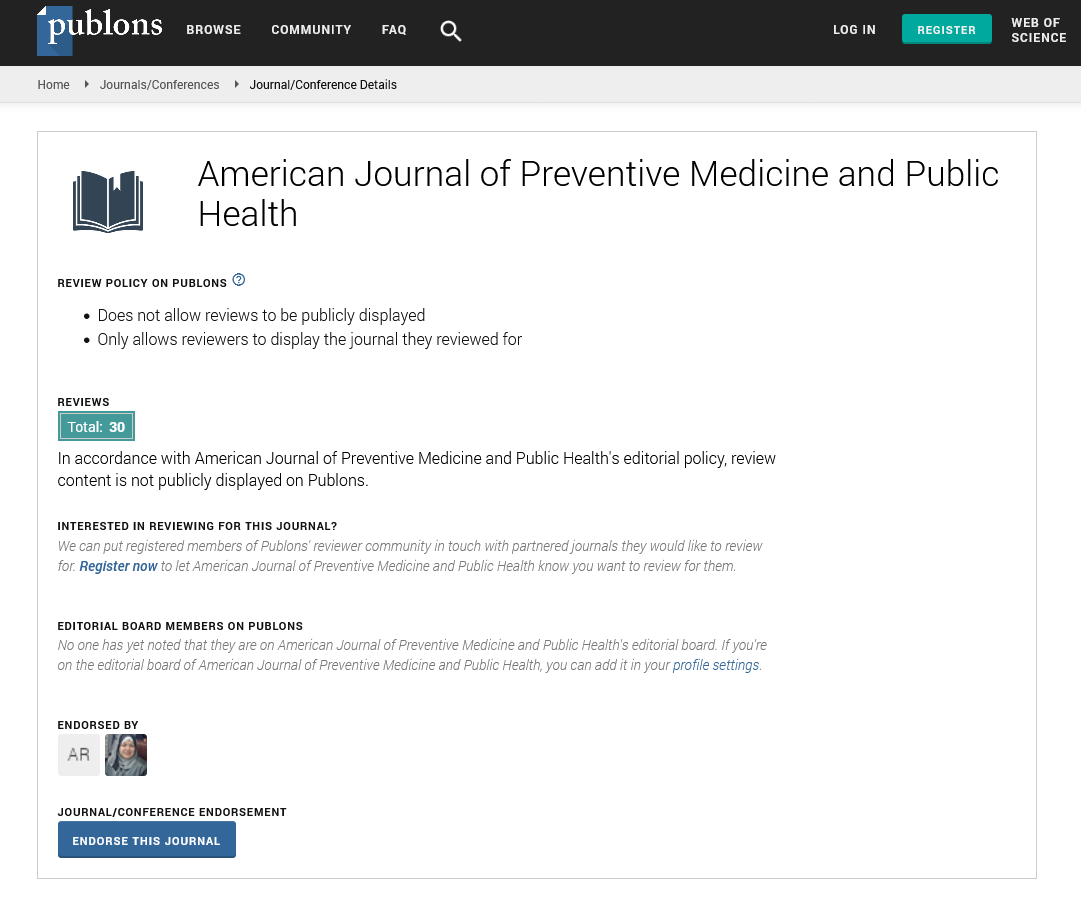Commentary - American Journal of Preventive Medicine and Public Health (2022)
Characteristics of SARS-CoV-2 Delta Variants during COVID-19 Pandemic
Gilberto Vaughan*Gilberto Vaughan, Department of Internal Medicine, University of Texas Medical Branch, Galveston, USA, Email: vaughangilberto@yahoo.com
Received: 20-Sep-2022, Manuscript No. AJPMPH-22-79262; Editor assigned: 22-Sep-2022, Pre QC No. AJPMPH-22-79262 (PQ); Reviewed: 10-Oct-2022, QC No. AJPMPH-22-79262; Revised: 17-Oct-2022, Manuscript No. AJPMPH-22-79262 (R); Published: 27-Oct-2022
Description
Once it was discovered in November 2021, the SARS-CoV-2 omicron strain quickly outcompeted earlier varieties by spreading quickly around the world. The number of confirmed cases reported between December 2021 and March 2022 (the omicron period), in Europe, surpassed all cases previously documented, according to the Our World in Data COVID-19 database. At least in populations who have received vaccinations, Omicron seems to produce less severe acute illness than previous versions. However, the likelihood that many people will develop long-lasting symptoms is a significant worry, and health and workforce planners urgently require knowledge to scale resource allocation effectively.
We sought to determine the relative probabilities of long-COVID in the UK during the omicron phase in comparison to the delta period in this case-control observational analysis. Self-reported information from the COVID Symptom Study app was used. ExeTera13 was used to extract and pre-process the data.
A positive real-time PCR or lateral flow antigen test for SARS-CoV-2 after vaccination, at least one log each week in the app for at least 28 days after testing positive, 2, and no prior SARS-CoV-2 infections before vaccination were the inclusion criteria in both time periods.
For both times, more women (55% for omicron cases and 59% for delta cases) participated than men. Omicron and delta cases were similar in age (mean age 53 years) and comorbidity prevalence (around 19%). Omicron cases were dispersed in areas with marginally less deprivation than delta cases (16.7% vs. 17.5% for IMD 1-3), according to the local area Index of Multiple Deprivation (IMD), a score ranging from 1 (most impoverished) to 10 (least disadvantaged). We used a univariate logis- tic regression model adjusted for sex to determine the relationship with lengthy COVID (outcome) and the infection duration (exposure), IMD, age, comor-bid conditions, immunization history (one, two, or three doses), and body mass index are all factors that affect the likelihood of protracted COVID. In or-der to account for any potential waning of vaccine protection, we divided the study into three groups based on how long had passed between the infec-tion and most recent vaccination: 3 months, 3-6 months, and more than 6 months. In omicron cas-es, 2501 (4%) of the 56003 individuals and 4469 (10%) of the 41,361 individuals with delta cases, respectively, had lengthy COVID. With odds ratios ranging from 0.24 to 0.50, Omicron cases were less likely to develop lengthy COVID for all vaccination timings. When the data was divided into age groups, same findings were similarly supported.
The prospective symptom logging of a wide vari- ety of symptoms is a major strength of our study in relation to long COVID, as it provides a compre- hensive picture of the symptoms that may be pres- ent. We believe that this is the first peer-reviewed study to report on long COVID risk associated with infection by the omicron variant. The self- reported data has limitations, including the absence of direct testing for infectious variations and the absence of objective measurements of illness duration.
Due to sex and socioeconomic bias, the samples were not completely generalizable to the UK popu-lation, but they were similar enough to allow com-parisons. We lacked the data necessary on children. Finally, in order to facilitate quick reporting, the evaluation term for omicron instances was a little bit shorter than it was for the delta variant, and evaluation of longer COVID durations (such as >12 weeks) was not feasible.
Overall, depending on age and the length of time since immunization, we discovered a 0.24-0.50 reduction in the likelihood of protracted COVID with the omicron variation compared to the delta variant. However, the pandemic curve’s shape and amplitude will determine how many people are actually experiencing lengthy COVID at any one time. For instance, our data are consistent with the UK Office for National Statistics’ estimate that the number of people experiencing long COVID actually increased from 1.3 million in January 2022 to 1.7 million in March 2022, given the high numbers of people infected with omicron in the UK from December 2021 to February 2022. 4 Future numbers of cases with long COVID will surely increase given the UK omicron peak of over 350 000 new symptomatic COVID-19 instances per day predicted on March 26, 2022, by the ZOE app model, with 4% of cases being long COVID.
Copyright: © 2022 The Authors. This is an open access article under the terms of the Creative Commons Attribution NonCommercial ShareAlike 4.0 (https://creativecommons.org/licenses/by-nc-sa/4.0/). This is an open access article distributed under the terms of the Creative Commons Attribution License, which permits unrestricted use, distribution, and reproduction in any medium, provided the original work is properly cited.







